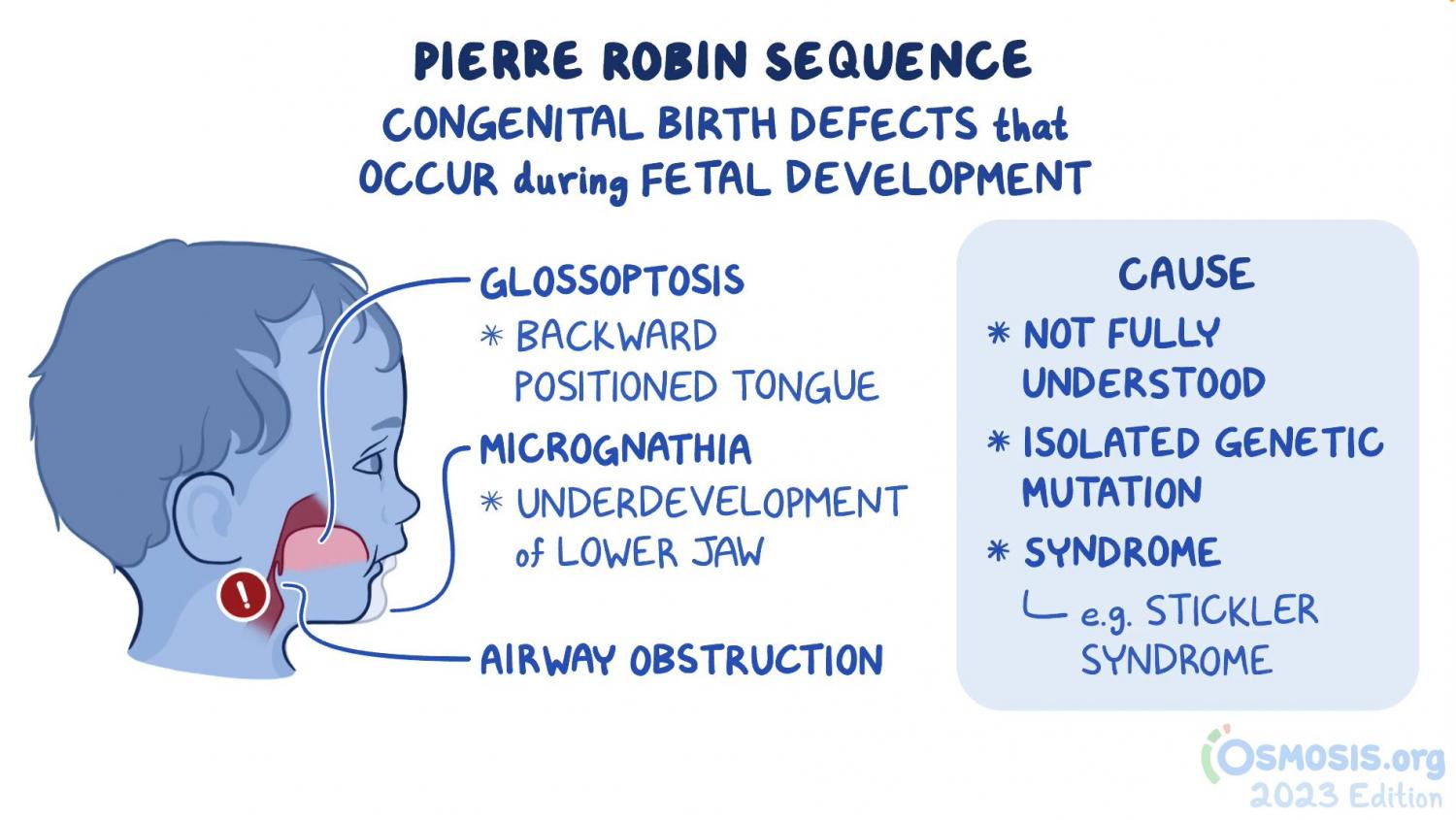
Rare Disease Education: Pierre-Robin Sequence
Editor: Kelsey LaFayette, DNP, RN, FNP-C
"When you hear hoofbeats, think of horses, not zebras,” is a common saying in medical education that means you should think of common conditions first, instead of rare ones, in making a diagnosis. “Rare” is a relative term though and about 7,000 rare, or "zebra," conditions affect more than 350 million individuals worldwide. Although these conditions collectively affect an enormous number of people, each of these conditions individually is rare enough that it can be difficult to secure the resources to study them and to develop treatments and cures. Likewise, awareness of rare conditions may be low and health care professionals may not be familiar with their signs and symptoms making it more difficult to reach a correct diagnosis and provide effective treatments.
To increase knowledge about rare conditions, Osmosis and the National Organization for Rare Diseases (NORD) have collaborated on an initiative to bring education and awareness to the public. We are excited to be a part of this initiative because we believe everyone deserves quality health care, no matter how rare their condition.
Zebra Highlight: Pierre-Robin Sequence
“It's like you're watching your baby suffocating but there's no water anywhere around” is a terrifying way one parent described his daughter’s experience right from birth.
Pierre Robin Sequence is a rare congenital condition characterized by physical anomalies that result in making the newborn’s breathing difficult. Micrognathia, a small lower jaw, and glossoptosis, displacement of the tongue towards the back, are hallmark clinical features. Added to these can be a cleft palate, an abnormal opening of the roof of the mouth. In some cases, whole additional syndromes can be associated that can add a layer of complexity to diagnosis and treatment.
Today’s Zebra affects males and females equally.
Meet Philippe, father of Lysiane
Philippe Pakter’s daughter Lysiane was born with a serious form of Pierre Robin Sequence. As is all too common in the rare disease world, the diagnosis came late and the knowledgeable experts with effective cures are few and far between. Being an international lawyer and legal consultant, Philippe and his wife chose to dive deep to uncover everything they could about the science of the Pierre Robin Sequence and the laws governing rare disease healthcare in the European Union to ensure the best care for their daughter. They faced hurdle after hurdle, big and small, but perseverance paid off. Whether it’s the story of Lysiane or that of the founding of the Pierre Robin Europe organization, this episode of the Raise the Line podcast is gripping. Listen to host Shiv Gaglani, Co-founder CEO of Osmosis, and Philippe Pakter by clicking this link.
Educational Video:
More Information on Pierre-Robin Sequence
